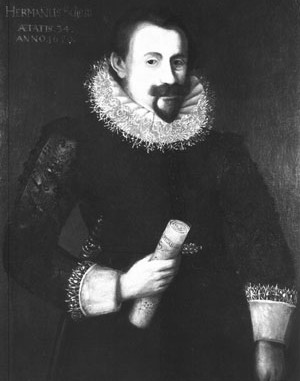

German composer. Upon his father's death in 1593, Schein's family moved to Dresden, where he entered the Hofkapelle of the Elector of Saxony as a boy soprano. There he also received instruction in music from the Kapellmeister, Rogier Michael, and was exposed to much secular and sacred choral music in Latin, German, and Italian. After a brief time at the University of Leipzig, he continued his studies in music at Schulpforta, an electoral school near Naumberg, from May 18, 1603 to April 26, 1607; his teachers there were Bartholomäus Scheer and Martin Roth. In 1608 Schein received an electoral scholarship to study law and the liberal arts at the Univ. of Leipzig, where he remained until 1612. The following year Schein assumed the position of house music director at Schloss Weissenfels and tutor to the children of Gottfried von Wolffersdorff. On May 21, 1615 he was appointed Kapellmeister to Duke Johann Ernst the Younger at Weimar. The following year he auditioned successfully for the position of Thomaskantor at Leipzig, succeeding Calvisius. There his duties included directing the choral music in the Thomiaskirche and the Nicolaikirche, and teaching fourteen hours a week of Latin and singing in the Thomasschule; his most famous pupils were the poet Paul Fleming and the composer Heinrich Abert. Schein suffered from poor health, and illness restricted his activities during the last several years of his life. He established friendships with Scheidt and Schütz.
Schein was one of the major figures in the evolution of the baroque Geistliches Konzertand the spiritual madrigal. His varied output includes German songs, large-scale Latin and German motets, many spiritual madrigals or Konzertewith continuo, secular concertato pieces, dance suites and chorale harmonizations. At first an adherent of the traditional Lassus-inspired prima prattica,he quickly came to favour up-to-date Italian styles of emotional declamation, combining these with the setting of Lutheran chorale melodies in a most original way in the Opella nova(1618, 1626). In his sacred madrigals he adopted the Italianate idiom of Marenzio and early Monteverdi, making use of dramatic contrasts of texture and harmony and handling contrapuntal ideas in masterly fashion.
Works:
Sacred vocal. Cymbalum Sionium(1615); Opella nova(1618, 1626), Fontana d'Israel(1623), Cantional oder Gesangbuch Augspurgischer Confession(1627, 1645).
Secular vocal (all texts by Schein). Venus Kräntzlein(1609); Musica boscarecciaor Wald-Liederlein(1621, 1626, 1628), Diletti pastoralior Hirten Lust(1624), Studenten-Schmauss (1626).
Occasional music; instrumental music (Banchetto musicale,1617).